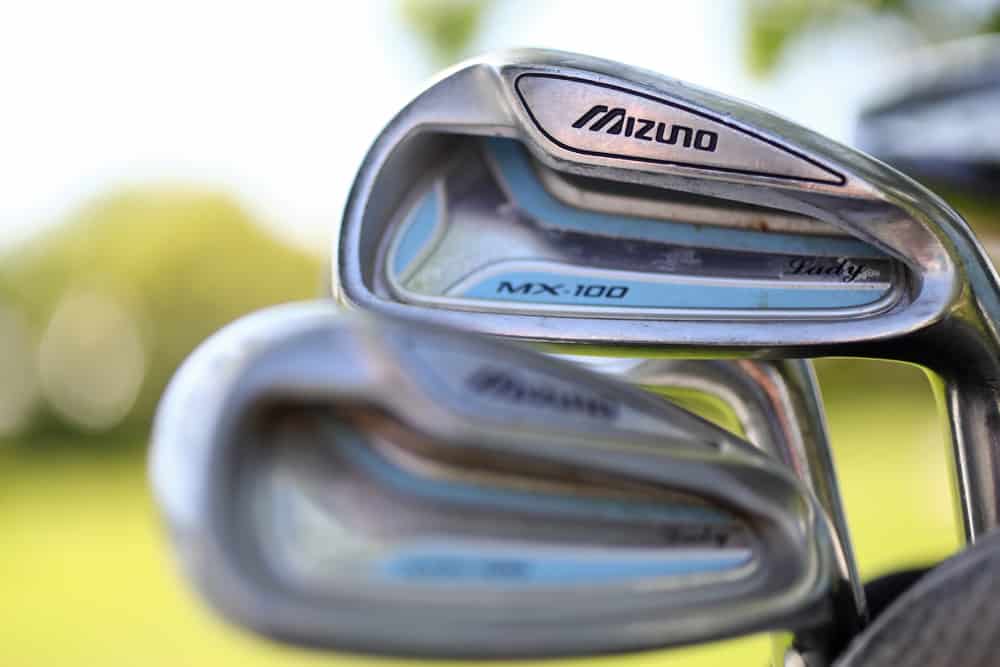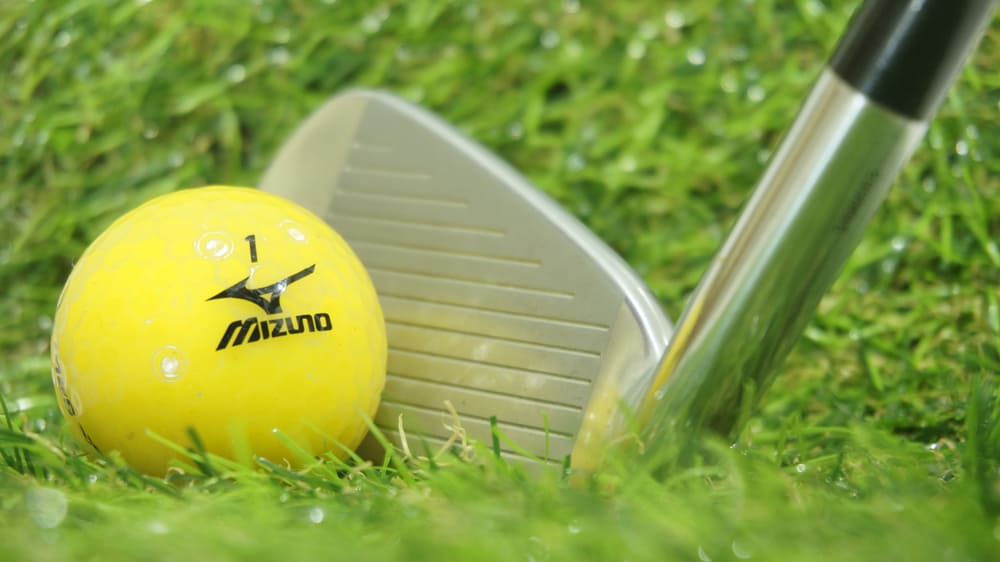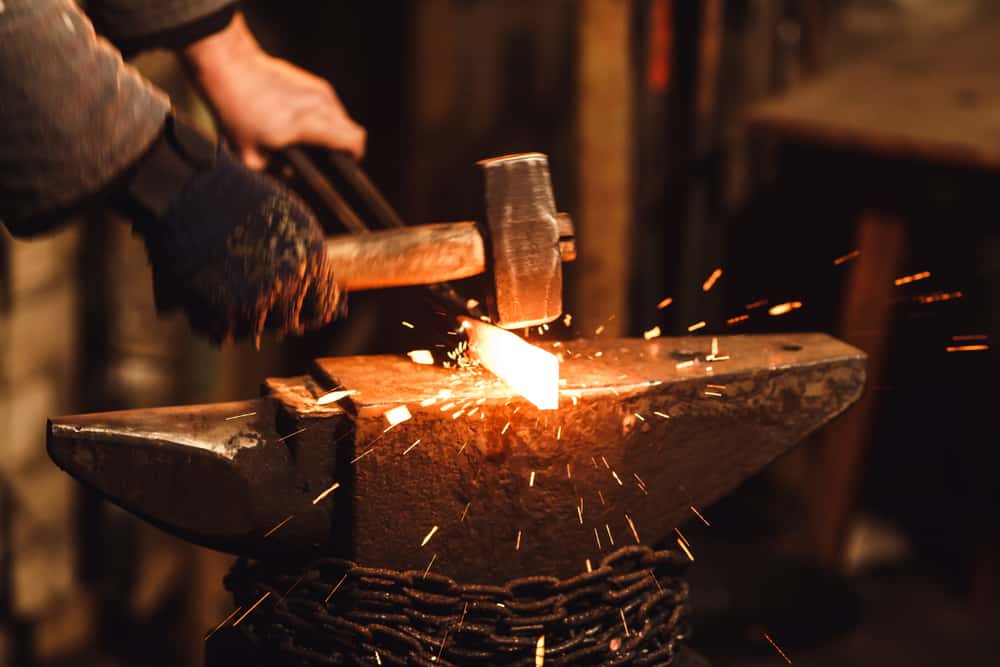
Many golfers are starting to believe that where a golf club is made plays a major role in determining how it will perform.
Although not all golfers are convinced that there is truth to this theory, some believe that it is absolutely the case.
If you are a fan of Mizuno golf clubs, you know that there are some great things about their performance benefits and how they will impact your abilities on the course.
If you are curious about why Mizuno golf clubs are so good, maybe look into a bit more about where they are made.
Where Are Mizuno Golf Clubs Made?

Mizuno golf clubs are made in Japan, but they are assembled in the United States.
For many golf companies, to do the entire development of the clubs outside of the United States, it gets too expensive.
However, they can get better manufacturing processes and more quality control over the build of the club if they are assembled in the United States.
In addition, clubs will ship much better if they are shipped when they are not assembled.
As soon as you ship something that is assembled, there is a chance that it will have some imperfections.
For domestic shipping, the concerns are not as great.
For international shipping, there are major problems with customs and travel that clubs need to go through to make it to the United States.
The Mizuno factory is in Braselton, Georgia, and this is where they do all of the assembly for the Mizuno golf clubs and other Mizuno sporting good products.
Mizuno clubs have always been known for their high-end manufacturing and the ability to produce a great feeling golf club.
The reason behind this is the Japanese forging process that the Mizuno irons go through.
This is not done in the United States, but instead, the heads come to America from Japan.
In order to understand what it is that makes the Mizuno irons feel different, it helps to know what goes on in the Japanese manufacturing process.
Let’s take a look at this process and all that is involved.
What Is The Mizuno Forging Process?

The Japanese forging process is what sets these irons apart from the others on the market.
However, depending on which club you are hitting, the process can vary slightly.
Here are some of the steps that you will see in the Mizuno forging process.
1. Heating Of Billet
The Mizuno forged irons start out as one single steel rod.
The steel rods are cut into ten-inch lengths so that they are easier to work with.
Next, they will need to heat the billet to 1,200 degrees Celsius.
The heating process is what allows the club to be manipulated and forged.
One of the best ways to understand the way this process works is to think about a solid piece of metal. If you looked at it under a microscope, there would be small holes between the particles.
However, what golf club manufacturers try to accomplish is for there to be less space between the metals of these irons.
With less space between them, the metals tend to blend together better, and this makes for a purer feel when contact is made with the ball.
When the clubhead is heated, the billet of steel is then folded to form the rough outline of where the head and the hosel are going to form.
2. Forging Mold
Once the billet is bent, it is ready to go into the forging mold.
The forging mold is where the metal is formed so that it actually crushes closer together and forms that very singular piece with a pure feel.
For the Mizuno process, there is a 1,000-ton hammer press that is pushed down four times on the clubhead.
This hammer press is very heavy, and it is done more than once to make sure that a smooth grain structure inside the iron starts to form.
The grains in the metal will push together, and this will help to prevent potential air bubbles that can create more problems in the process.
Those air bubbles will eventually be felt by a great player, and it’s important to avoid this at all costs.
The forging mold is the most important part of the overall process when developing a Mizuno iron.
3. Rough Trim
Next, the irons are roughly trimmed to match the size of a traditional golf club.
The rough trim will trim off any of the extra metal on the club that will not be necessary for the iron in the hands of a player.
The rough trim is not the final cut of the club as it would not give a golfer a very smooth finish on their equipment.
Instead, this is simply going to give the developers a rough outline to work with.
You can think of this a bit like using a cookie cutter when you are baking.
4. Reheated
Some golf companies may only go through a single forge, but Mizuno does this twice.
This means that after their golf clubs have already completed the forging process, they are going to go through another forging process.
Essentially, this leads to an even purer feel when you play with the clubs.
However, in order to be forged yet again, the iron has to be put in a mold at a very high temperature.
Without the high temperature, the steel won’t bend properly.
This second forging is where the true golf club shape really starts to take place.
With the shape in place, you will start to recognize this as a Mizuno golf iron.
If there are any excess pieces of steel at this point, they can be trimmed away.
5. Shot Blasted
The last part of the forging process is something called shot blasting.
This is done to clean the club before it goes through the stamping process.
With the stamping, the Mizuno logo and markings are put on the clubhead, and the club goes through its first of many inspections.
At this point, the clubhead is shaped, and it is forged, but the Mizuno golf club is not finished yet.
There is an additional finishing process that will make this clubhead even more impressive for golfers.
What Is The Mizuno Finishing Process?

Once the club is forged, the job is not done.
Although this is what helps them to get their impressive feel and consistency, they still don’t have the Mizuno look to the club that they are going to need.
The steps in the finishing process are just as important and involved as those in the forging process.
Without this, you would likely not even recognize that these are Mizuno irons.
1. Make Room For The Golf Shaft
It is essential at this point to make room in the hosel for where the golf shaft is going to go.
When Mizuno’s heads are produced, they are made with the hosel on during the entire process.
Other golf manufacturers like Miura will wait until the end and then connect a hosel.
There are different methods here, but Mizuno finds this to be the best option for them.
The hosel is drilled out so that the shaft can go in, and then a very rough grinding is done.
This rough initial grinding will just simply set up the loft and the lie of the golf iron.
2. Loft And Lie Check
As you may know, the loft and lie of the golf club are very important.
This is the reason a golf club will fly a certain distance or be able to perform on the course the way you expect it to.
The loft and lie must be highly accurate, and therefore, it is done to within a tolerance of 0.25 degrees.
The loft and lie will be checked again during this process to ensure it hasn’t changed at all.
3. After Barrel Process
Once the loft and lie are set, then the clubhead goes through what Mizuno refers to as the After Barrel Process.
This basically means that the clubhead is submerged in water with hundreds of thousands of small stones.
These stones actually start to smooth and clean the clubhead to ensure that it looks great.
This process takes some time, and most clubheads are submerged for two hours or so at the Mizuno factory.
4. Face Milled And Grooved
Next, the clubface is milled, and then the grooves are etched in.
As you can tell, some parts of this Mizuno process are done by hand, and others are done with the use of a machine.
The custom engraving and the etching of the grooves are done with a laser.
This helps to ensure accuracy.
Since this is done so late in the process, it is going to end up being costly if a mistake is made.
The lasers are precise, and they do a great job of ensuring that the club conforms to the USGA standards that are in place.
5. Polishing And Painting
Next, the golf clubs go through a polishing process where they are sent through a machine that buffs out any imperfections.
While in the polishing machine, there are several different buffing cloths to help ensure that it comes out perfect.
Once the clubs are polished, there are 11 different colors that the clubhead can be painted in.
Of course, the standard color is what you will see most commonly, but Mizuno does offer some custom color configurations on some of their custom golf clubs.
Then the head gets a shaft put in, and a new grip is put on.
This is the point in the process where the loft and the lie of the golf club are checked yet again.
Mizuno wants to ensure that nothing has changed as they have completed the golf club head.
If any adjustments need to be made, this is the time to get that done.
The quality control standards for Mizuno are very good.
Conclusion
Hopefully, you now feel a bit more informed about the process that Mizuno golf clubs go through when they are created.
We are impressed with all that this process has to offer and the ability to get great looking and high-performing clubs released to the public.
One of the things that Mizuno is known for is its ability to get clubs to feel great.
The Japanese forging process certainly makes a difference to players who are looking for consistency and performance in their swing.
If you are looking for new golf irons this year, make sure you look into the Mizuno brand.
Chances are there will be an option that could work well for your game.



Thank you for the very eye-opening process that goes into forging the Mizuno irons. It convinced me to plan a trip to the golf store to check these out. My Mizunos are 30 years old and it is time for a change.